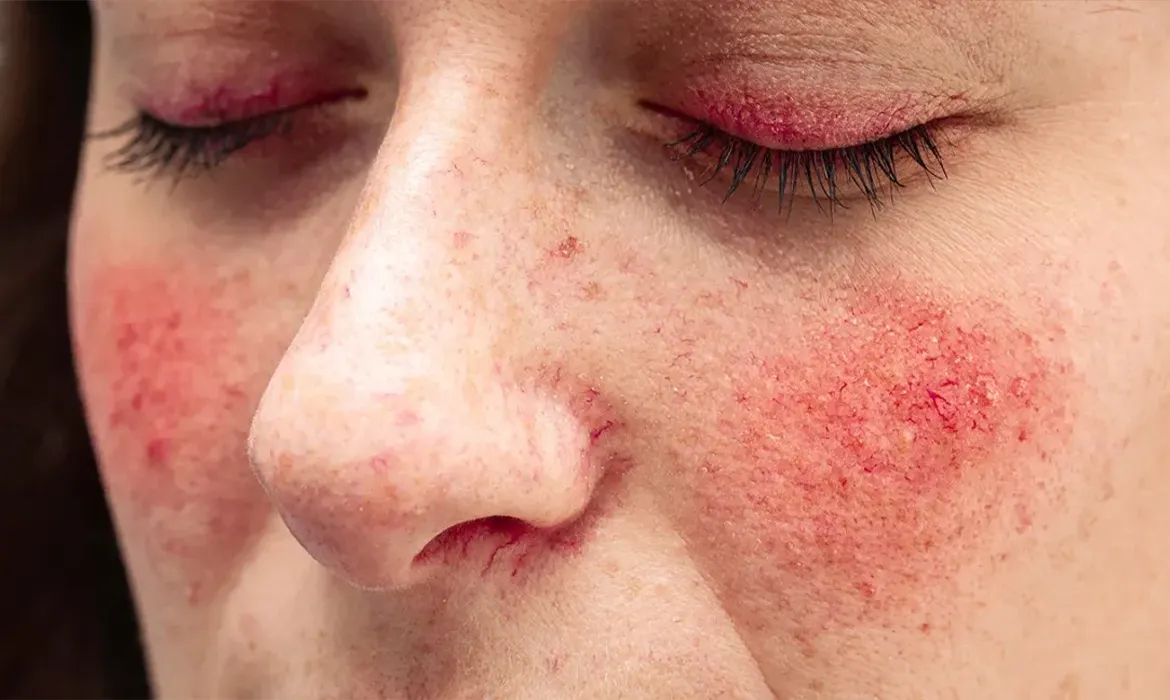Rosacea is a chronic inflammatory skin condition that primarily affects the central face and is characterized by persistent redness (erythema), flushing, visible blood vessels (telangiectasia), papules, and pustules. It often begins after the age of 30 and is more prevalent in individuals with fair skin, though it can affect all skin types. The pathophysiology involves dysregulation of the innate immune system, overexpression of antimicrobial peptides like cathelicidin (LL-37), and abnormal vascular responses leading to neurovascular dysregulation. Triggers such as sunlight, heat, alcohol, spicy foods, stress, and even certain skincare products can exacerbate symptoms. The Demodex mite, a common skin resident, is found in higher densities in rosacea patients and may play a role in inflammation. There are four recognized subtypes: erythematotelangiectatic, papulopustular, phymatous, and ocular rosacea, each with distinct clinical features.
Effective management of rosacea involves identifying and avoiding individual triggers, along with both topical and systemic therapies. Topical agents include metronidazole, azelaic acid, ivermectin, and brimonidine (a vasoconstrictor for reducing redness). Oral antibiotics like doxycycline are commonly prescribed for their anti-inflammatory properties, especially in papulopustular subtypes. For persistent telangiectasia and redness, laser and light-based therapies such as pulsed dye laser (PDL) and intense pulsed light (IPL) are widely used. Recent developments include topical minocycline and rho-kinase inhibitors under clinical investigation. Skincare routines should focus on barrier support with gentle, non-irritating, and fragrance-free products. Sunscreen use is essential, as UV radiation is a potent trigger. Ocular rosacea may require eyelid hygiene, lubricants, and oral antibiotics. Long-term management often requires a combination of pharmacologic treatment, laser therapy, and patient education for optimal control and improved quality of life.
 Anti-Wrinkle Night Cream
2 × 950,000 T
Anti-Wrinkle Night Cream
2 × 950,000 T  Anti-Wrinkle Day Cream
1 × 840,000 T
Anti-Wrinkle Day Cream
1 × 840,000 T  Anti-Wrinkle Night Cream Travel Size
1 × 285,000 T
Anti-Wrinkle Night Cream Travel Size
1 × 285,000 T  Tinted Natural Sunscreen
1 × 710,000 T
Tinted Natural Sunscreen
1 × 710,000 T  Hyaluronic Acid Serum
1 × 860,000 T
Hyaluronic Acid Serum
1 × 860,000 T  Fluid Natural Sunscreen Travel Size
1 × 207,000 T
Fluid Natural Sunscreen Travel Size
1 × 207,000 T 